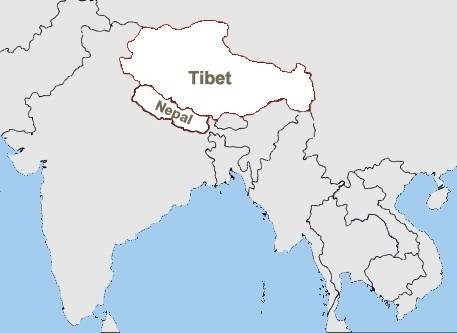
Situated to the north of Nepal and the Himalayan mountains, the Tibetan plateau rises 4,500 meters above see level. The plateau is arid, receiving less than 10 centimeters of rainfall each year. The summers are hot and the winters brutally cold, dropping as low -40˚ C in some places. It is the third least populated region of the world.
The majority of the population of the region follows Tibetan Buddhism, but there are small communities of Christians and Muslims in Tibet, some of which date back to around 700 CE. There are still a few practitioners of the Bon religion, which predates Buddhism in the region. Most of the indigenous people living there today are ethnically Tibetan, but there are dozens of other ethnic groups within Tibet, many of whom are nomadic herders. Since the invasion after the failed Tibetan Rebellion of 1959, there has been a steady influx of Chinese immigrants to the region.
The items in our collection represent a small part of the vast Tibetan Buddhist artistic tradition. Tibetan artifacts are usually inscribed with mantras, lines of sacred scripture that were often chanted during meditation. Everything about the construction of an artifact, from the materials to the inscriptions, is designed to guide the mind toward peace and enlightenment.